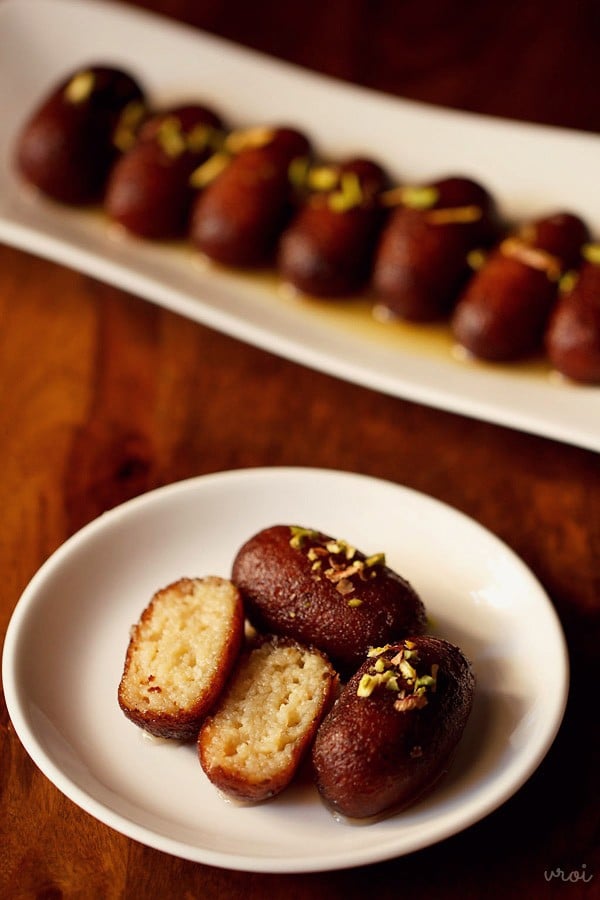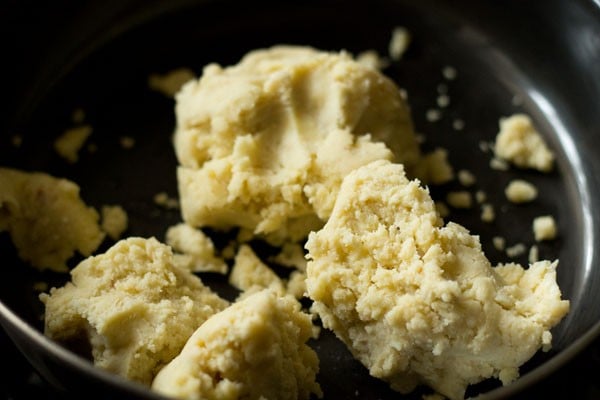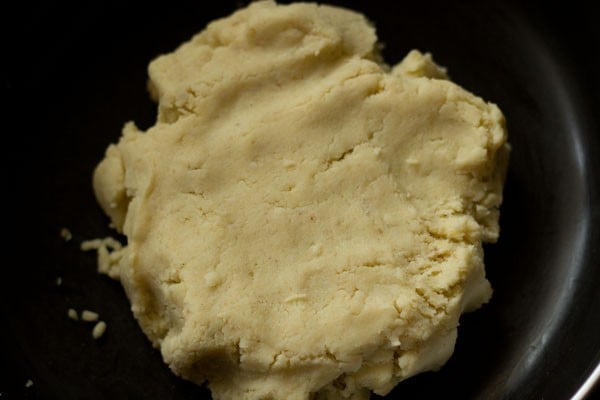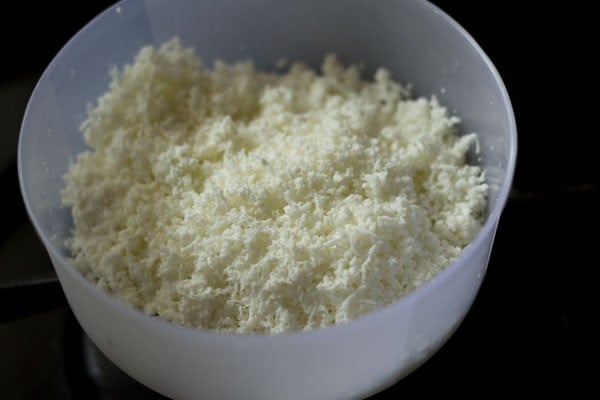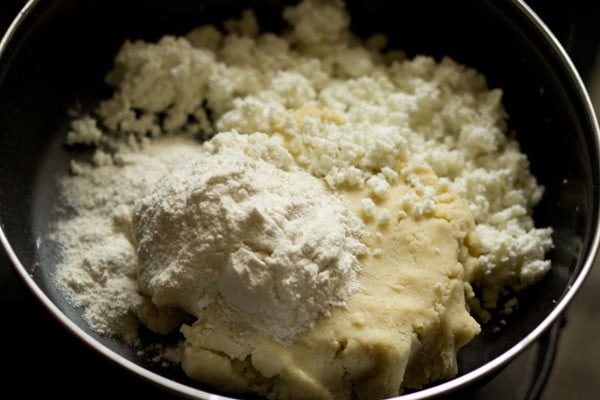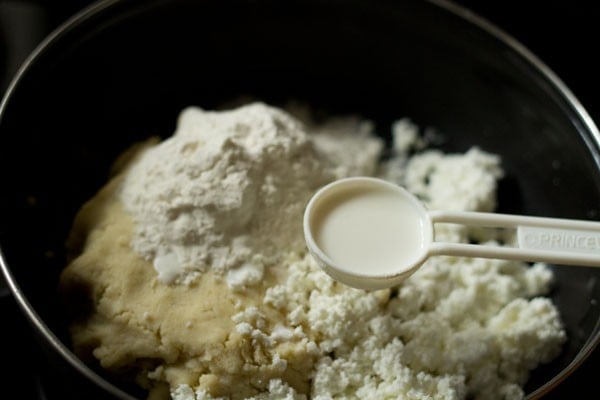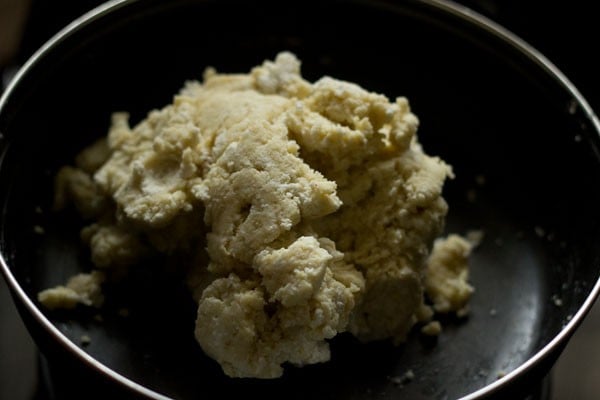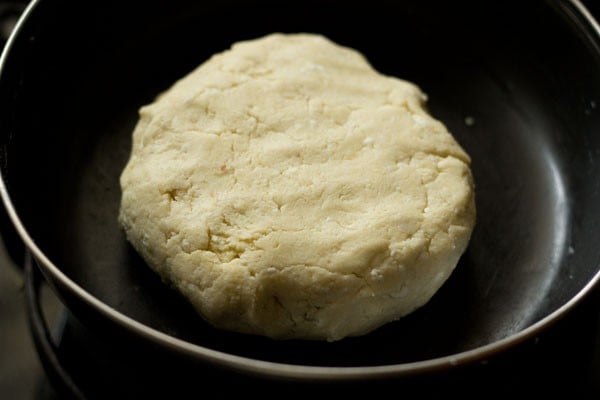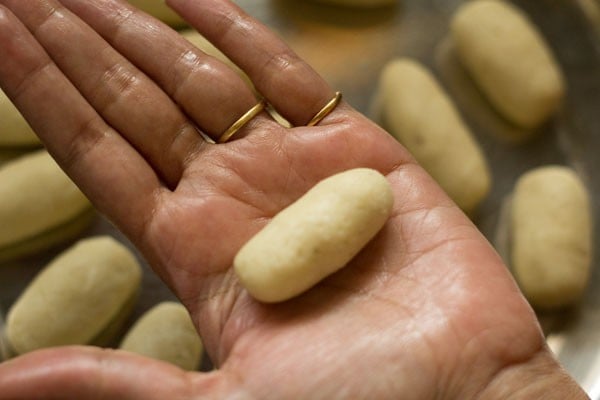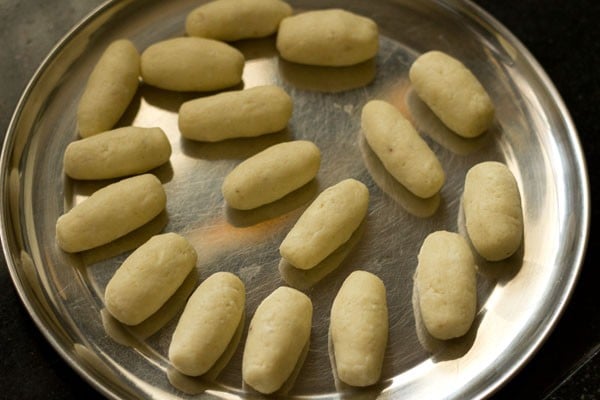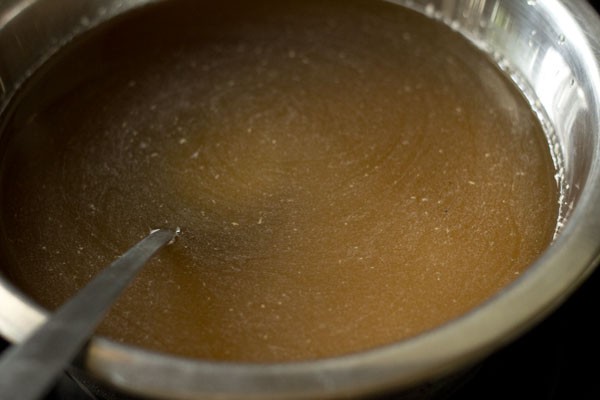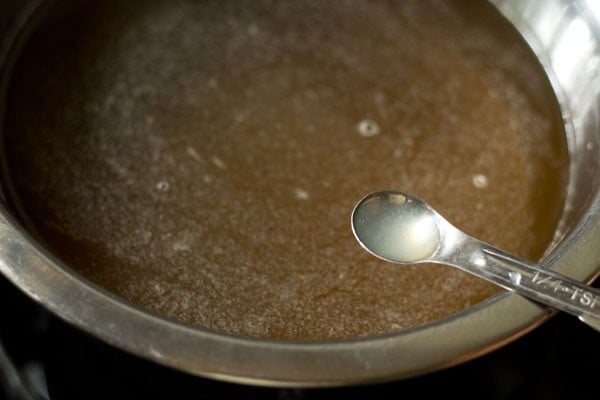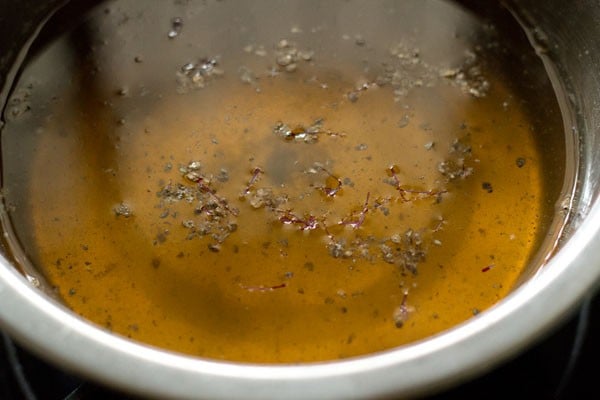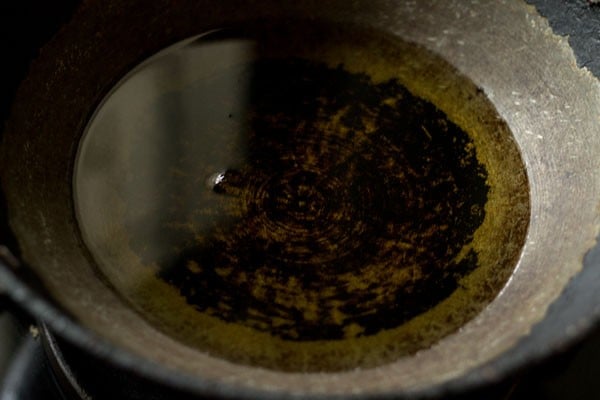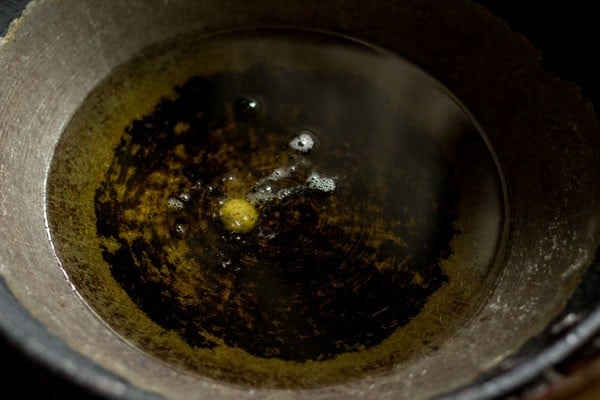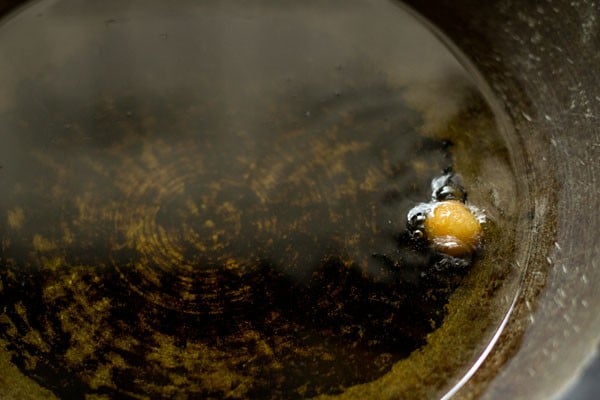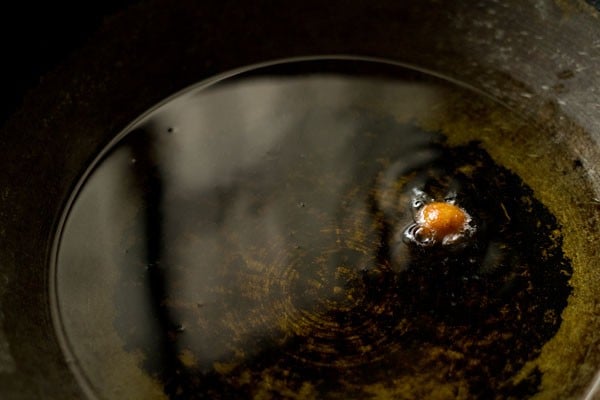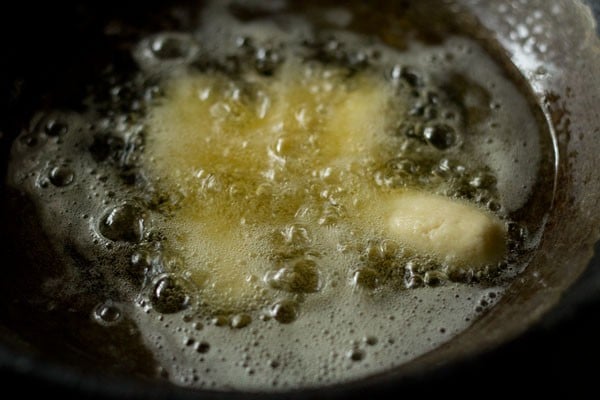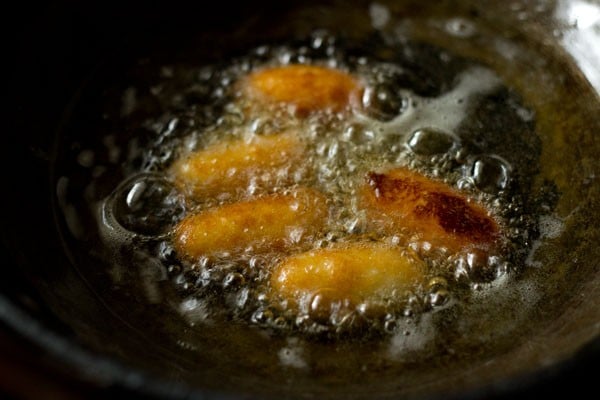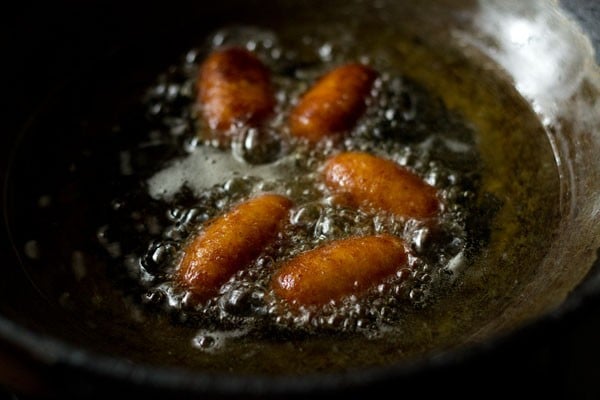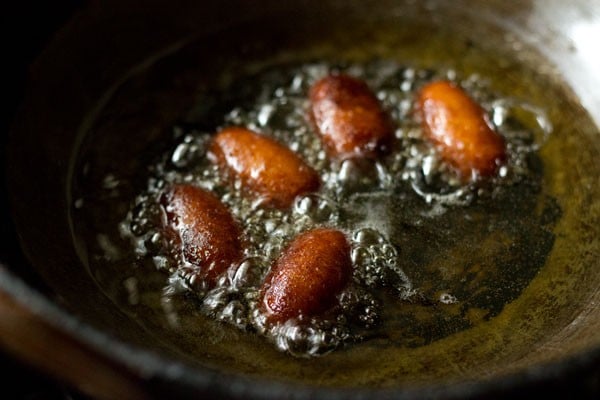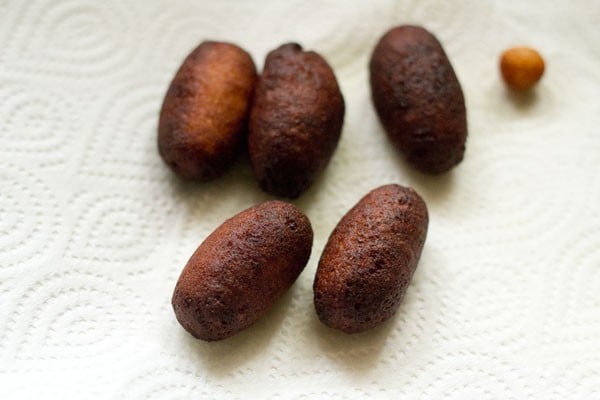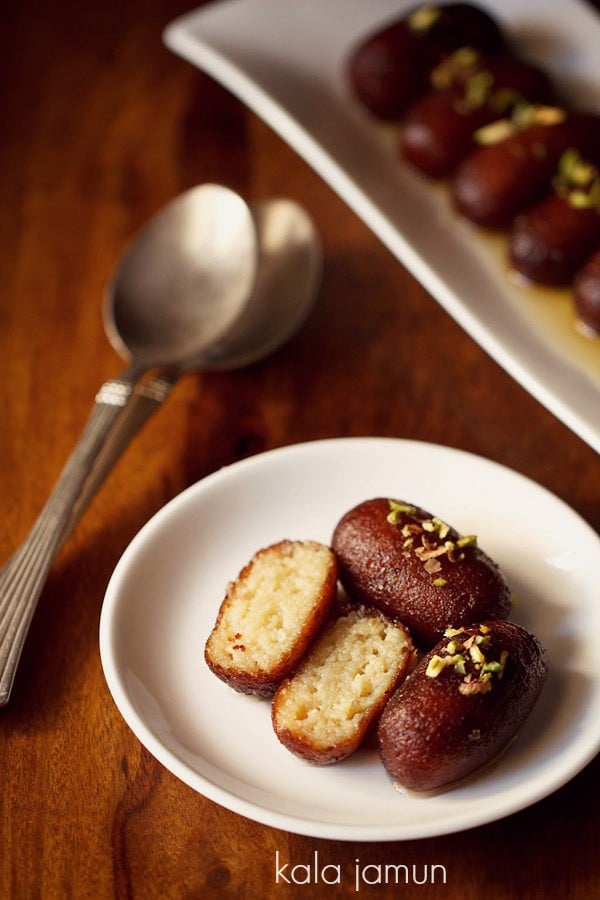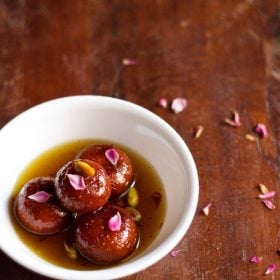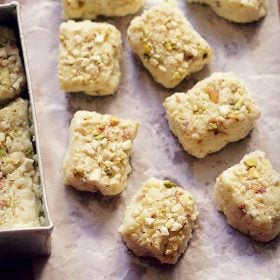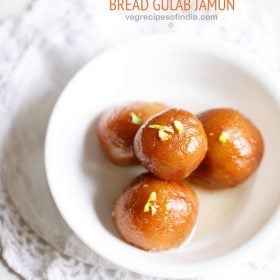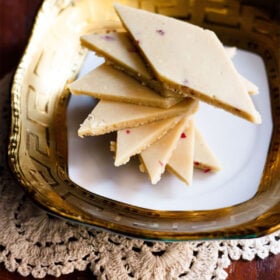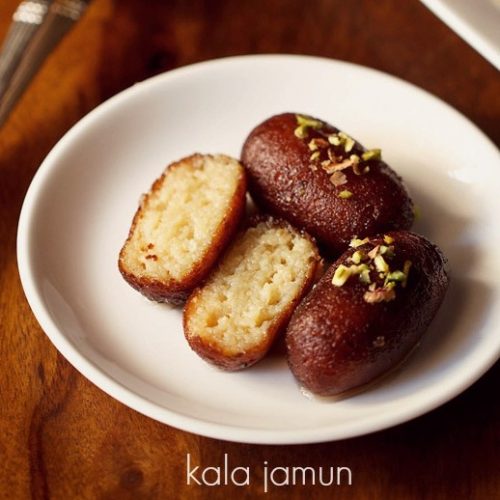About Kala Jamun
If you are not well-versed with this famous Indian sweet variant, there are high chances that you might confuse it with a fruit of the same name! However, the similarity ends at just the name and the fact that both the mithai and the fruit are blackish/dark purple in color. Kala Jamun, the sweet is obviously related to the famous gulab jamun and has nothing to do with the tropical fruit, also known as java plum. While Kala Jamun recipe does have some similarities with its counterpart, it has other regional names. For instance, kalo jaam or kala jaam. The difference between a Kala Jamun and gulab jamun, primarily, is in the color and texture. We all know that gulab jamuns are golden colored and Kala Jamun is essentially dark, just some shades away from black or even dark purple. Hence, ‘kala’ which is a Hindi word for black. This characteristic black color is achieved by frying the jamuns on low heat for a longer time. It is as simple as that. By frying for a longer time, the exterior not only gets a dark hue, but also gets an almost bittersweet flavor and the texture also changes and becomes thicker as compared to that of a gulab jamun. Another feature that makes these both distinct in their own is the fact that after you make a Kala Jamun recipe, you usually serve it at room temperature. Whereas, gulab jamuns are technically served hot or warm, and sometime at room temperature as well. But whatever it is, the combination of vanilla ice cream with any of these 2 jamuns is just supreme! Try it too.
More on Kala Jamun
Kala Jamun, gulab jamun, Rasgulla, Coconut Ladoo and Jalebi are a few Indian sweets that are an evergreen hit with me and folks too. I mean, we never really get bored of eating these. And I can say the same for any such person, who’s a sweet tooth, especially with an affinity towards the sweets of India. Traditionally, khoya or mawa is used in a Kala Jamun recipe, and even to make gulab jamuns. Khoya is basically dried evaporated milk solids. These milk solids are obtained by continuously cooking the milk on a low flame, till most of the moisture evaporates. I have adapted this Kala Jamun recipe too from my recipe of Gulab Jamun. It is quite simple, if you follow the procedure and the methodology religiously. Although, I have shaped these dark colored jamuns in an oblong form, you can even shape them in a round form. If you follow this Kala Jamun recipe, you might have some dough left, with which you can also make another variation of this sweet, the Dry Jamun. This particular recipe will give you about 35 to 37 Kala Jamuns. As obvious with this class of sweets, Kala Jamun too is one of the most favorite choices of sweet during festivals like Diwali, Holi, etc. And not just this, it is just perfect for small parties or get togethers at your home as well. You can prepare the jamuns a day before and keep them soaking in the sugar syrup in the refrigerator. These Kala Jamun stay well for about a week, when refrigerated.
How to make Kala Jamun
Making dough
- Take 250 grams of khoya in a plate or bowl. The khoya used for the jamuns is the soft khoya known as daap ka khoya or chikna khoya, which mashes and kneads very well.
- Mash the khoya very well with your hands. Keep aside. There should be no lumps or small bits or pieces in the khoya. You can also grate and then mash the khoya. Make sure the mashed khoya does not feel granular to touch.
- Finely grate 100 grams paneer and keep aside. 100 grams paneer yields about ½ cup grated paneer. If you are using freshly made paneer, then make sure it is well strained of the whey.
- Now, add the grated paneer and 3 tablespoons all-purpose flour (maida) to the khoya.
- Add 1 tablespoon milk.
- Gently mix everything very well.
- Bring this mixture together and form into a dough. Do not knead the dough. Just mix and gather into a ball. If the mixture looks dry and does not cling together, you can add 1 tablespoon more of milk.
Shaping Kala Jamun
- Now, pinch small marble sized balls from the dough and roll them in a round shape between your palms. Roll lightly and not heavily.
- Now, roll the ball again between your palms to give an oblong cylindrical shape.
- Roll all the jamun this way and keep them covered with a cotton kitchen towel. Note that I used only half of the dough to make Kala Jamun and saved the rest for making dry jamun.
Making sugar syrup
11. Take 2 cups sugar in a pan. 12. Add 1.5 cups water. 13. Keep this pan on stovetop on low to medium heat and stir so that the sugar begins to dissolve. 14. When all the sugar is dissolved, add ¼ teaspoon lemon juice, which will prevent the sugar syrup from crystallizing. 15. Cook the sugar syrup on low to medium heat till it becomes sticky or you get ½ string consistency. 16. Switch off the heat and add ½ teaspoon cardamom powder and 12 to 15 strands of saffron, crushed. Also, add 1 tablespoon rose water.
Frying Kala Jamun
- While the sugar syrup is cooking, begin frying the jamuns. The sugar syrup has to be hot when you add the fried jamuns. Heat oil or ghee in a kadai or deep pan on a low to medium flame for deep frying the jamuns.
- For testing, slide a tiny dough ball in the hot oil. The ball should slowly rise up and not pop immediately to the surface. This is the temperature at which we will fry the jamun.
- Keep the heat to a low and fry the tiny jamun ball.
- Fry your small tester jamun till it becomes golden. If the jamun ball breaks, then add a few teaspoons of flour to the dough and mix well again. I suggest that before you begin shaping the jamuns, you do this test.
- Now, working in batches, gently slide the full-sized jamuns into the oil. The heat should be low. Do not crowd the pan.
- When you see light golden spots, gently turn over the jamuns. Here I was handling the camera too, so the jamuns got browned more. The jamuns fry very quickly, so be attentive.
- Keep on turning them in the oil, like a gentle swirling with the slotted spoon, so that they brown evenly. While frying, the jamuns should feel light like thermocol balls, and not heavy.
- Fry till they turn a shade or two darker than the golden color.
- Place Kala Jamun on paper towels to remove excess oil.
- Whilst they are still hot from the pan, quickly add Kala Jamun to the sugar syrup. Fry all the jamuns in the same way and then add to the sugar syrup. Note that the sugar syrup has to be hot. To maintain the hot temperature, you can keep the sugar syrup bowl or pan on a hot water bath. Cover and allow the Kala Jamun to soak in the sugar syrup for 3 to 4 hours before serving. Once the sugar syrup cools down, keep the bowl covered in the refrigerator.
- Serve Kala Jamun at room temperature or chilled as a dessert. You can garnish with some sliced or chopped pistachios or blanched almonds while serving, or even offer up a scoop of Vanilla Ice Cream to accompany your sweets.
Expert Tips
Please be sure to rate the recipe in the recipe card or leave a comment below if you have made it. For more vegetarian inspirations, Sign Up for my emails or follow me on Instagram, Youtube, Facebook, Pinterest or Twitter. Gulab Jamun With Milk Powder Kalakand Recipe (Indian Milk Cake) Bread Gulab Jamun Kaju Katli Recipe | How to make Kaju Barfi This Kala Jamun Recipe from the archives was first published in April 2015. It has been updated and republished in March 2024.

